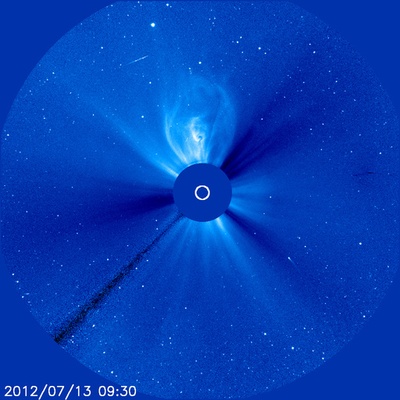Comet 96P/Machholz Visible in SOHO Images
Though the comet can become very bright at perihelion, its close proximity to the Sun makes it all but impossible to observe at that time. Luckily we have a number of spacecraft observing the Sun which can also be used to observe the comet. One such spacecraft, the joint ESA/NASA Solar and Heliospheric Observatory (SOHO) is currently picking up the comet. The image below is the latest image from the LASCO instruments on the spacecraft. [Update: 96P has now moved out of the SOHO LASCO field-of-view.
Perihelion occurred on July 14.78 UT (or roughly 11:40 am Tucson time on the 14th, that’s 11:40 am PDT, 12:40 pm MDT, 1:40 pm CDT, 2:40 pm EDT). By the end of July, the comet will be visible in the evening sky as a faint and difficult 9-10th magnitude object for telescope observers.
